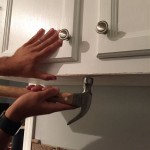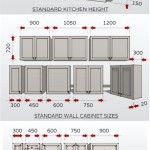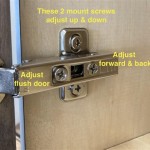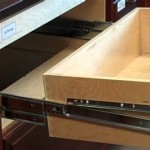How to Remove Kitchen Cabinets
Removing kitchen cabinets can be a necessary step in a kitchen renovation or if you simply want to replace them. The process can be daunting, but with the right tools and approach, it can be accomplished efficiently and safely. This article will outline a comprehensive guide to removing kitchen cabinets, covering the necessary tools, safety precautions, and step-by-step instructions.
Safety Precautions
Before embarking on any cabinet removal, prioritize safety. Take the following precautions to prevent injuries and ensure a smooth process:
- Disconnect the Power: Before working near electrical outlets or wiring, shut off the power to avoid electrical shocks.
- Wear Protective Gear: Use safety glasses to protect your eyes from debris, gloves to prevent cuts and splinters, and a dust mask to avoid inhaling sawdust.
- Have a Helper: It is always helpful to have an extra set of hands, especially when removing larger or heavier cabinets.
- Clear the Work Area: Remove any obstacles or furniture that could impede your progress or cause tripping hazards.
Essential Tools
To successfully remove your kitchen cabinets, gather the following tools:
- Screwdriver Set: Includes both Phillips and flat-head screwdrivers to remove screws of various sizes.
- Pry Bar: Used to separate cabinets from walls or countertops.
- Hammer: For driving nails or removing stubborn screws.
- Utility Knife: To cut through caulk or sealant.
- Measuring Tape: To measure the dimensions of the cabinets before removal.
- Safety Glasses: To protect your eyes from flying debris.
- Work Gloves: To prevent cuts and splinters while handling cabinets.
- Dust Mask: To protect your respiratory system from sawdust and other airborne particles.
Removing the Cabinets
Once you have the necessary tools and safety precautions in place, you can start removing the cabinets. Follow these steps:
- Remove Cabinet Doors and Drawers: Start by detaching the cabinet doors and drawers. This will make the cabinets lighter and easier to handle.
- Disconnect Appliances and Fixtures: If the cabinets are connected to appliances or fixtures like sinks or dishwashers, disconnect them. Note the location of any plumbing or electrical connections.
- Remove Fasteners: Locate and remove any screws, nails, or other fasteners holding the cabinets to the wall or countertops. Use a screwdriver or hammer and pry bar as needed.
- Free the Cabinets: Once the fasteners are removed, gently pry the cabinets away from the walls and countertops using a pry bar. Be careful not to damage the surrounding walls or countertops.
- Disassemble Large Units: If you have large cabinet units, they may need to be disassembled for easier removal. Look for screws or fasteners that connect different sections of the cabinet.
- Dispose of Cabinets: Dispose of the removed cabinets responsibly. Check with your local waste management authority for accepted methods of disposal.
Removing Cabinet Hardware
After removing the cabinets, you may want to salvage the hardware, such as hinges, pulls, and knobs. Follow these steps:
- Remove Handles and Knobs: Unscrew the handles and knobs from the cabinet doors and drawers.
- Detach Hinges: Carefully remove the hinges from the cabinet doors and frames. Note the orientation of the hinges to ensure proper reinstallation if you plan to reuse them.
- Clean and Store: Once the hardware is removed, clean it thoroughly to remove any dirt or grime. Store the hardware in a safe place for future use or disposal.
Additional Tips
Here are some additional tips for removing kitchen cabinets:
- Label Components: Label each cabinet component, including the doors, drawers, and shelves, to ensure they are reassembled correctly if you are reusing them.
- Take Pictures: Take pictures of the cabinet installation before removing them. This will help with reinstallation if you decide to reuse them.
- Work in Sections: Remove the cabinets in sections to manage the weight and avoid damage.
- Be Patient: Cabinet removal requires patience and careful work. Do not rush the process to prevent accidents.
Successfully removing kitchen cabinets can be a rewarding undertaking. By following these steps and prioritizing safety, you can efficiently prepare your kitchen for a fresh new look or a complete renovation.

How To Remove Kitchen Cabinets Budget Dumpster

Kitchen Removing Base Cabinet Countertops Backsplash

Removing Some Kitchen Cabinets Rehanging One Young House Love

How Do I Remove My Kitchen Cabinets Rta Wood

Removing Some Kitchen Cabinets Rehanging One Young House Love

How To Remove Kitchen Cabinets Budget Dumpster

How To Remove Kitchen Cabinets Budget Dumpster

Kitchen Removing Base Cabinet Countertops Backsplash

How To Remove Kitchen Cabinets

How To Remove Kitchen Cabinets
Related Posts








